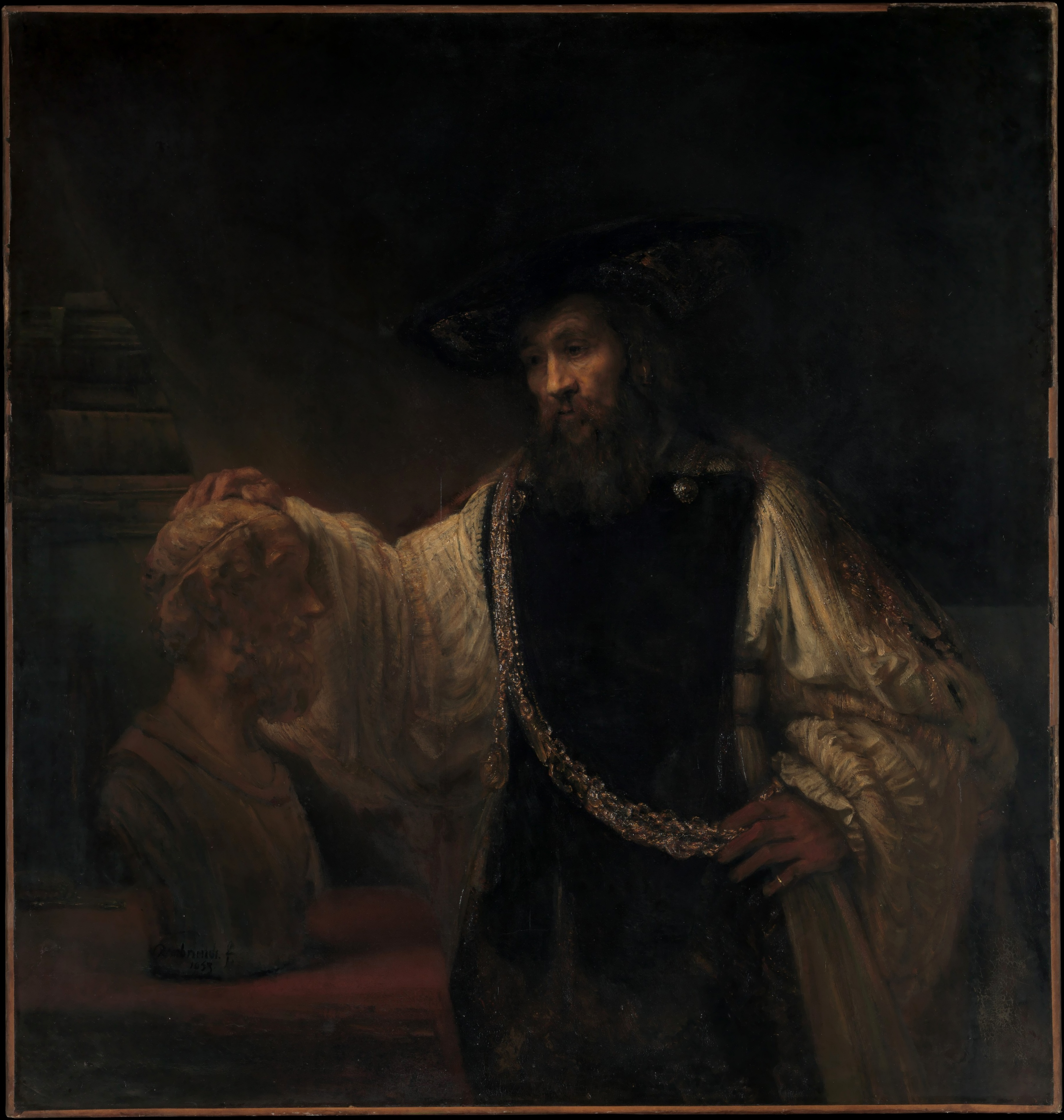During
my visit to the Metropolitan Museum of Art, there were two pieces of art that I
felt really captured the essence of The Renaissance era of art, and the Baroque
period of art. These two pieces were The Miracle of Christ Healing the Blind
by El Greco (Domenikos Theotokopoulos), and Rembrandt’s Aristotle with a Bust of Homer.
El
Greco is the name given to the greek artist Domenikos Theotokopoulos, which is Spanish for The Greek. His painting The Miracle of Christ Healing the Blind
was painted in 1570 in either Venice or Rome.
The picture shows Jesus Christ healing a blind man in front of many
people. This picture has a lot of
elements that were commonly used in Renaissance art including linear
perspective. As you look at the photo
you can see the building appear to be further and further away leading to a
vanishing point. To create more of an
illusion of depth El Greco uses vertical perspective to make objects or forms
appear smaller the higher they are placed in the picture plane. The feel you get from this piece is very
miraculous and frantic. El Greco also
uses directional force to lead us to important elements of this painting to get
the feel of the story being told. When
you look at the group to the right you see some hands pointing to Jesus as he
performs his miracle, while their heads lead downwards to two figures in the
foreground. The group is huddled up as
if they are gossiping and are pointing to indicate that they are shocked by
what they are seeing/pointing at. When
you follow the faces to the two foreground figures you can see the woman
holding her chest and a man holding her back, which gives us the idea that she
may be overly excited or even frantic at the sight of Jesus curing the man of
his ailment, this could also indicate that they are family or close
friends. El Greco beautifully
illustrated a scene in this piece using many elements that were commonly used
in The Renaissance era of art.
 |
| Miracle of Christ Healing the Blind. |
Later
in his life El Greco would move to Spain and continue painting in a Baroque
style. The painting I saw from Rembrandt
called Aristotle with a Bust of Homer
really was as great display of Baroque art.
Rembrandt was from Leiden, which is located in the Netherlands, and he
eventually moved to Amsterdam to pursue his career in art. This piece of art was created in 1653 in
Amsterdam and it shows Aristotle resting his hand on a statue of Homer. In this piece you can see one of the main
elements in Baroque art at work, which is the contrast between shadows and
light. Rembrandt masterfully uses the
light and shadows in this piece to almost give the painting a story. Along with the tremendous detail to human
condition something that Baroque art shows quite a lot, and something Rembrandt
utterly mastered, he’s able to show us with the detail in the face and eyes
that Aristotle is contemplating something.
He uses the light and dark almost as an underlying play on Aristotle’s
thoughts. That as Aristotle is dressed
well and is doing well for himself with his teachings, that the material things
shouldn’t be taking him over and that there’s more to life. The shadows hovering over and descending onto
his shoulder show the idea that the material things can consume him, where the
light breaking through shining onto him and the statue of Homer remind him of
his ideas and things he has learned from others about life. Rembrandt depicted the element of conflict in
this piece beautifully. A lot of artists who painted in this period seemed to love the conflict that existed in society
and they all seemed to capture it in their paintings, Rembrandt and this piece
was no exception. Only Rembrandt took it
to a level that very few thought possible at that time and this is why I feel
this piece captures the spirit of the Baroque period of art.
 |
| Aristotle with A Bust of Homer. |


No comments:
Post a Comment